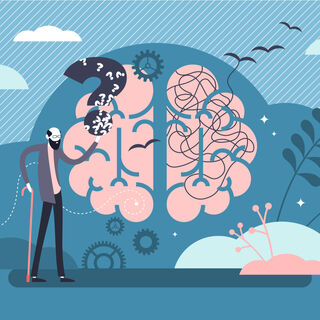Although many specific problems in dementia are best managed by equally specific solutions, there are some general approaches that can be used in a wide range of situations. In our first general approach, we will discuss how to better understand behaviors by examining what happened before the behavior and what came after it.

The ABCs of behavior change: Antecedents, Behaviors, Consequences
All behaviors have a purpose. Do you find this statement surprising? The purpose of a behavior may be to express an emotion, such as frustration or anger. It may be to satisfy a need, such as hunger or affection. It could even be to communicate information, such as, “I want to be left alone,” or, “I want to stay in the car.”
In order to manage problem behaviors, you first need to understand the purpose behind them. The ABCs of behavior change provides a framework for understanding why problem behaviors occur. You can identify the Antecedent, or what was happening with your loved one before a behavior occurred. You can also identify the Consequence, or what happened after the behavior occurred. Keeping a log that identifies the antecedents and consequences surrounding a problem behavior will enable you to identify patterns of why the behavior is occurring, select an intervention to try to improve the behavior, apply that intervention, and reassess to determine if the intervention is working or whether you need to try something different.
Behaviors are observable and can be measured
A behavior is something that is specific and observable. It is something that your loved one does or does not do. Behaviors can be seen, heard, or felt. Behaviors are not things we assume or infer. For example, when we see our loved one yelling, we might assume they are angry, but anger is not a behavior. Anger is an emotion we assume our loved one is feeling when we see they are yelling. The specific behavior that we observe is yelling. Said another way, yelling is a behavior because it is specific and observable—something we can hear and see.
Because behaviors are specific and observable, we can measure them: how often they occur (their frequency) and how long they occur for (their duration). We may want to decrease certain behaviors—such as yelling or asking repetitive questions—and increase other behaviors—such as sleeping or bathing.
Antecedents come before behaviors
Antecedents are the things happening with your loved one or in the environment before a behavior occurs. Antecedents can include events (bath time or bedtime), circumstances (noises or crowds), or objects (car keys or photographs). Antecedents can also be less apparent, including things like time of day, season, or physical discomfort. When trying to identify antecedents, in addition to the more obvious environmental triggers, it can be helpful to consider two other categories: physical and emotional needs. Your loved one may have trouble communicating their needs and may act out to get them met. Physical needs can include hunger and thirst, pain and discomfort, and over- or under-stimulation. Perhaps your loved one is constipated or ill. Maybe they are itchy from tags on clothing. Or maybe the environment is too noisy—or too quiet. Emotional needs can include a desire for affection, company, space, new people or places, or a change in routine. When we are trying to identify antecedents, we might ask ourselves these questions:
-
What day and time of day was it?
- What was the environment like?
- Who was there?
- Was there something happening or about to happen?
- Was there something your loved one wanted, like food or drink?
These questions can help us to identify aspects of the environment or unmet physical or emotional needs that might be causing the problem behavior. These questions may help you discover, for example, that the yelling occurs at bath time.
Consequences occur after behaviors
Consequences are things that occur immediately after the behavior. They can be something you do or something that happens in the environment. Remember, all behaviors have a purpose. Identifying the consequence of the behavior may help you understand its purpose. When we are trying to identify consequences, we might ask ourselves these questions:
- How did the environment change?
- Did something start or stop as a result of the behavior?
- Did your loved one get something, like food, drink, or attention?
For example, was the consequence of the yelling that you decided to skip the bath that day? Note that not every consequence or antecedent needs to provide an explanation for a behavior. Part of identifying them is to enable you to figure out which are relevant and which are not.
In my next blog, I will discuss how to use the ABCs to create a behavior log and manage behavior.
"behavior" - Google News
December 29, 2021 at 01:26AM
https://ift.tt/3EBppaH
Trouble with Behavior in Dementia? Try the ABCs. - Psychology Today
"behavior" - Google News
https://ift.tt/2We9Kdi
Bagikan Berita Ini














0 Response to "Trouble with Behavior in Dementia? Try the ABCs. - Psychology Today"
Post a Comment